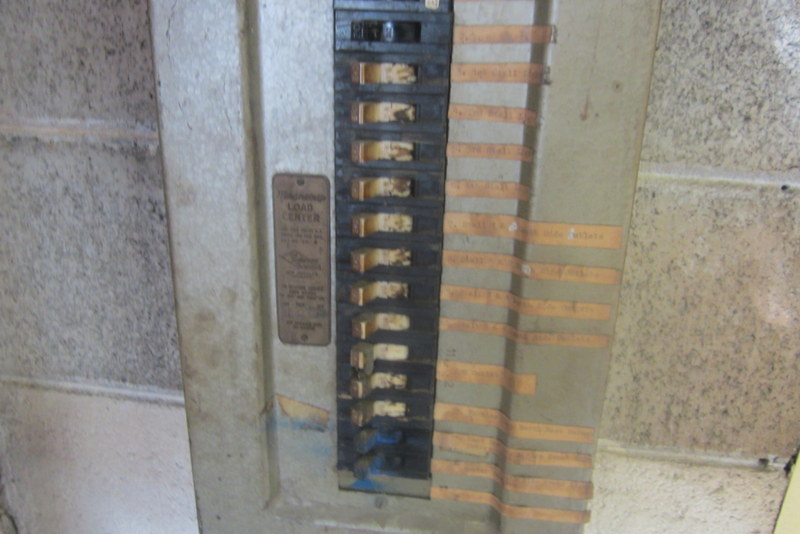We Have An Electric Panel Where?
March 5, 2018

Electrical panels – most buildings have them, and all too often they are completely forgotten until there is a problem or a need to access them for a renovation or expansion. Many times they are found in out of the way places and sometimes they are hiding in plain sight like in a corridor – and they still get ignored. This is too bad, because electric panels need attention too. Don’t ignore them!
Looking at the picture above, it is clear that this panel wasn’t installed yesterday. BOMA rates the life of electric panels and breakers at 30 years, and this panel is very certainly older than that. Think about this: the function of a circuit breaker is to trip in case of a problem and thereby protect the safety of the occupants of the building and the integrity of the building in general from things like fires from overheated electrical circuits. Do you really want to trust your safety and assets with breakers older than 30 years, especially ones that don’t get inspected or tested on a regular basis?
Another look at the panel above shows that it appears to be operating in a relatively dirty environment, which further increases the need for regular attention. The labels on the side don’t appear legible and per NEC 408.4 A:
408.4 Field Identification Required.
(A) Circuit Directory or Circuit Identification. Every
circuit and circuit modification shall be legibly identified as
to its clear, evident, and specific purpose or use. The identification
shall include an approved degree of detail that
allows each circuit to be distinguished from all others.
Spare positions that contain unused overcurrent devices or
switches shall be described accordingly. The identification
shall be included in a circuit directory that is located on the
face or inside of the panel door in the case of a panelboard
and at each switch or circuit breaker in a switchboard or
switchgear. No circuit shall be described in a manner that
depends on transient conditions of occupancy.
The labels on this panel don’t comply. Does labeling seem like an insignificant thing? It depends on whether or not you need to shut off a circuit in an emergency. Seriously, though, building codes such as this exist for this very reason and they ultimately have safety in mind.
What can and should be done with electric panels in our facilities? First and foremost, they need to be part of our overall maintenance program. That means, at a minimum, they need to be located, identified, and added to a periodic maintenance list. Every facility is different, so you need to decide what frequency to inspect and test them makes the most sense for your organization, but the right answer is not “never”.
What sorts of inspections should be considered for electric panels? Again, that depends on the building, the usage, the environment and other factors. At the very least, they should be visually inspected periodically its overall condition and to determine if there has been any changes over time. Other inspections and maintenance procedures should include infrared thermography to identify hot spots, which may indicate anything from overcurrent in a particular circuit to loose connections in the panel. Connections inside the panel should be tightened periodically by a qualified electrician. Lastly, check with your electrician or electrical engineer for further preventive maintenance tasks that may apply to your situation.
There are likely even more issues here. Can you spot them? Post them in the comments on LinkedIn, Instagram, Twitter or Facebook.
